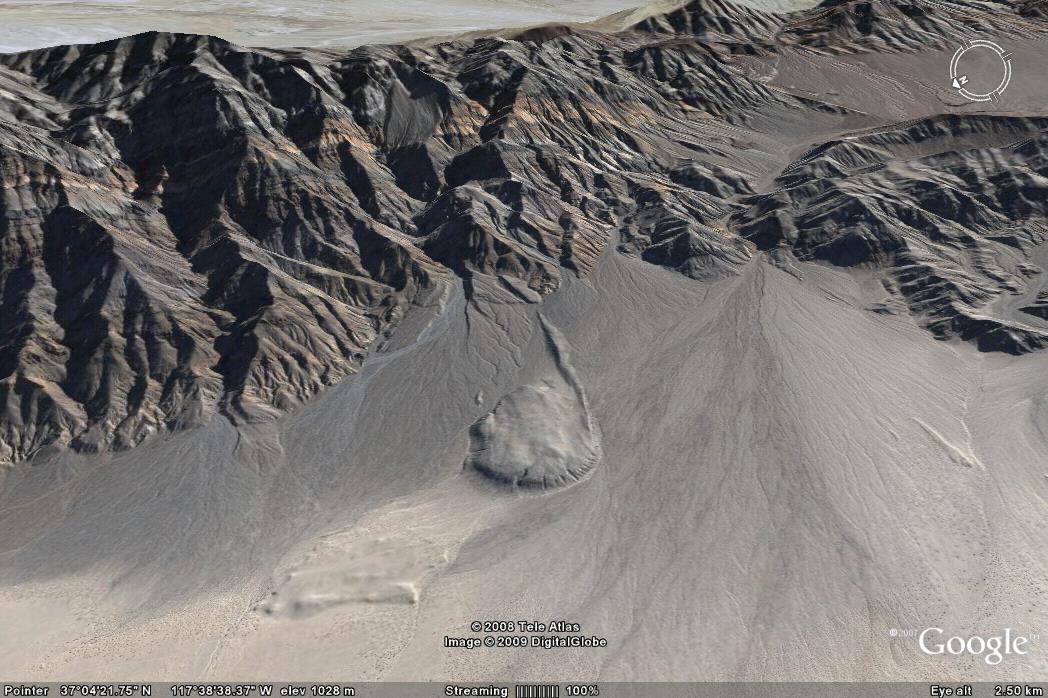15 January 2009
Intriguing long runout landslide in Death Valley
Posted by Dave Petley
Thanks to reader Gregory T. Farrand who brought my attention to a very intriguing feature located in Death Valley in California. This is a feature that was first identified and mapped as a long runout landslide by Michael W. Hart. Greg and Michael, together with Brian Olson and Phil Shaller, are currently studying this slide, which they are terming the “Eureka Valley Landslide”. The source rocks for the landslide are Cambrian marine sediments, mostly dolomite (dolostone). The slide is partially buried by Holocene alluvial fan deposits.
The landslide shows up really well on Google Earth. First, a vertical view with north almost at the top of the image:
 Next an oblique view looking eastward:
Next an oblique view looking eastward:

Michael and Gregory are writing a paper on the slide, which will be very interesting indeed when it comes out. In the meantime, a few observations:
- Identifying this is a great spot. Finding features like this is far from easy;
- In fact, our understanding of landslides in very arid environments is rather poor, so such observations are definitely interesting;
- The slide has appeared to have moved in such a way that it has formed a narrow tongue-like deposit. Such deposits are rare but certainly not unknown. Incidentally, the runout distance across the fan is about 1.7 km by my reckoning, although from the source area it may be twice this;
- There is that interesting feature NNW of the toe of the slide deposit. I wonder if this is just a result of the landslide preventing the debris fan channels from actively depositing in this area, perhaps allowing wind erosion, or is it landslide material that has perhaps eroded and then been deposited;
- The type of landslide of which this most reminded me is those seen in imagery from Mars. The image below was collected by the NASA Mars Global Surveyor Mars Orbitor Camera in 2004. The size of the landslide is very similar to that in Death Valley. I guess in some ways the conditions are similar (i.e. very arid), which is interesting in itself.

I hope that Gregory and Michael will let me know when the paper is published – I’ll note on the blog when this is the case.


 Dave Petley is the Vice-Chancellor of the University of Hull in the United Kingdom. His blog provides commentary and analysis of landslide events occurring worldwide, including the landslides themselves, latest research, and conferences and meetings.
Dave Petley is the Vice-Chancellor of the University of Hull in the United Kingdom. His blog provides commentary and analysis of landslide events occurring worldwide, including the landslides themselves, latest research, and conferences and meetings.
Could we be looking at an older long run-out landslide that went out further than a younger one atop part of its tail and then subsequent sedimentation has partly covered both of them?